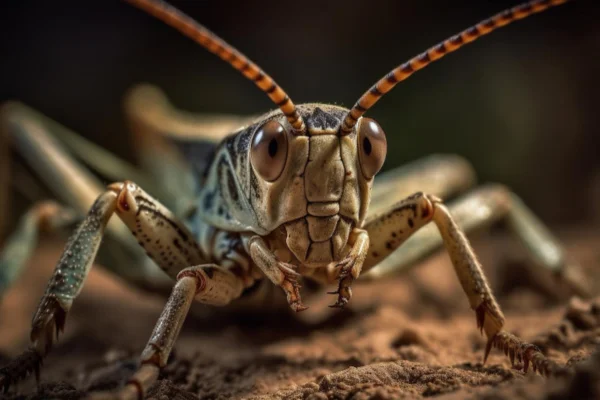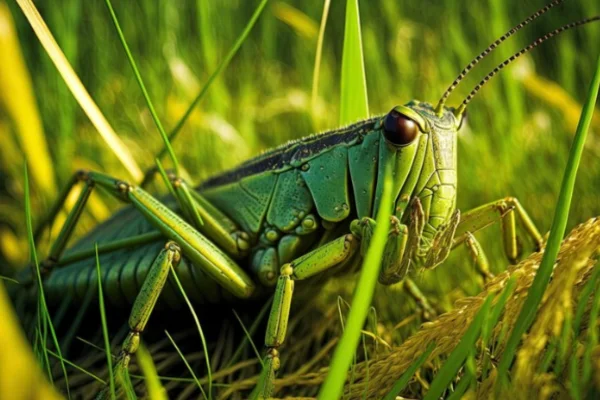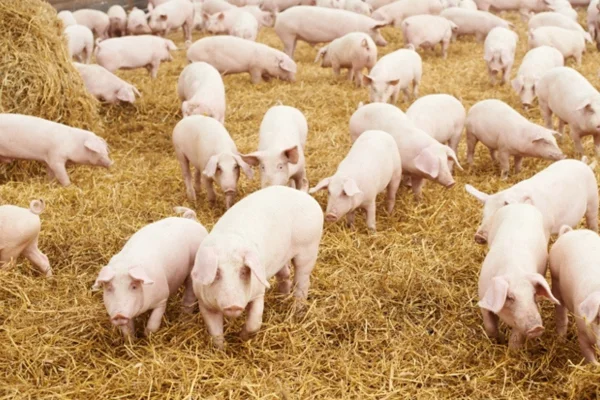Can crickets be dangerous? Discover myths and truths about these intriguing insects
Introduction: Crickets can be dangerous
Crickets, with their nocturnal presence and melodic songs, are fascinating insects that arouse curiosity and sometimes concern in many people. But can crickets be dangerous? In this article, we'll explore the myths and truths about these small insects, revealing interesting facts about their biology, behavior and potential risks to humans and other animals.
Crickets are intriguing creatures that inhabit a variety of environments around the world. Their nocturnal songs are often associated with the tranquillity and beauty of summer evenings, but some wonder whether these insects can pose any danger. Let's dive deeper into this subject and unravel the mysteries behind crickets.
Crickets: Curiosities of the animal world
Crickets belong to the order Orthoptera and are close relatives of grasshoppers and hoppers. With their long antennae and legs adapted for jumping, crickets are masters in the art of camouflage and communication through characteristic sounds. Although most species are harmless, there are some curiosities about these insects that may surprise even the most experienced nature enthusiasts.
Contents
Are there poisonous crickets? The myths unraveled
One of the most common myths about crickets is that they are poisonous and can pose a danger to humans. However, the truth is that crickets are generally harmless and have no poison. They don't have poisonous stings or produce toxic substances. In fact, crickets play an important role in the ecosystem, helping to decompose organic matter and serving as food for a variety of predators.
Can crickets be dangerous? Demystifying the fear
Although crickets themselves are not dangerous to humans, they can cause indirect damage in some situations. For example, in large infestations, crickets can damage plantations and agricultural crops, affecting the livelihoods of rural communities. In addition, the presence of crickets in domestic environments can be annoying and unwelcome, especially when their nocturnal chirping interferes with people's sleep and rest.
Types of dangerous crickets: Exploring the most common species and their curiosities
Although crickets are generally harmless, there are some species that can be considered pests and cause problems in certain regions. Among the most common crickets that can pose a risk are the mole cricket (Gryllotalpa gryllotalpa) and the garden cricket (Acheta domesticus), which can cause damage to crops and gardens if not properly controlled.

Curiosities of the cricket world: Exploring their diversity and behavior
In addition to their ecological importance, crickets have a number of fascinating characteristics that make them objects of study and admiration. For example, some species of crickets are known for their complex songs, used to attract partners or mark territory. In addition, crickets exhibit an impressive variety of physical and behavioral adaptations that allow them to survive and thrive in a wide range of environments.
Importance in Nature: A Technical Perspective on Crickets
Crickets play a significant role in maintaining the health and balance of natural ecosystems. From a technical perspective, their importance can be understood in several dimensions:
1. Pest control: Many species of crickets act as biological control agents, feeding on insects considered agricultural pests. This predation capacity contributes to the natural control of pest populations, reducing the need for chemical pesticides and promoting the sustainability of agricultural systems.
2. Nutrient cycling: Crickets play a fundamental role in the decomposition of organic matter, contributing to the cycling of nutrients in ecosystems. By consuming decaying plant and animal debris, crickets speed up the decomposition process and release essential nutrients into the soil, enriching it and promoting fertility.
3. Predator feeding: Crickets serve as an important food source for a variety of predators, including birds, reptiles, amphibians and mammals. Their availability as prey contributes to the balance of food chains and the maintenance of biodiversity in different habitats.
4. Indirect pollination: Although crickets are not direct pollinators of plants, their search for food and shelter can facilitate the dispersal of pollen in the environment. By moving between flowers in search of nectar and other food sources, crickets can inadvertently transport pollen grains, promoting cross-pollination and plant reproduction.
5. Environmental Quality Indicators: The presence and abundance of crickets in an ecosystem can serve as indicators of environmental quality and habitat health. As organisms that are sensitive to changes in the environment, variations in the cricket population can reflect changes in ecological conditions, such as pollution, soil degradation and habitat loss.
There are several species of crickets in the world,
There are several species of crickets in the world, but some are more common and widely distributed than others. Here are some of the most common cricket species:
- Gryllus assimilis (House cricket): This is one of the most common species of cricket found in urban and rural areas in many parts of the world. They are known for their adaptation to humanized environments, such as houses, gardens and agricultural areas.
- Acheta domesticus (Garden Cricket): Another common species found in urban and rural environments. They are often seen in lawns, gardens and vegetated areas, where they feed on plants and decaying organic matter.
- Gryllotalpa gryllotalpa (mole cricket): This cricket gets its name from its habit of digging tunnels in the ground, similar to that of a mole. They are most common in areas with damp soil, such as fields, gardens and farmland.
- Gryllus bimaculatus (Tiger cricket): This species is recognizable by its distinctive colors, with black and yellow stripes on its body. They are found in a variety of habitats, from rural areas to tropical forests, where they feed on a variety of plants and insects.
- Gryllodes sigillatus (Ringed cricket): Originally from the Antilles, this cricket has become an invasive species in many parts of the world. They are common in tropical and subtropical climates, where they can be found in urban areas, forests and plantations.
- Teleogryllus oceanicus (Night Cricket): This species is known for its distinctive song at night. They are common in temperate and tropical regions, where they inhabit grassy areas, fields and forests.
These are just some of the most common species of crickets found around the world. It is important to note that the geographical distribution and abundance of cricket species can vary according to climate, habitat and other environmental factors.
Conclusion: Crickets can be dangerous
In short, crickets are fascinating insects that play an important role in the ecosystem. Although they are often associated with myths and unfounded fears, the truth is that crickets are generally harmless to humans and other animals. By better understanding the biology and behavior of these insects, we can cultivate a harmonious coexistence with them, valuing their contribution to biodiversity and the balance of ecosystems.
Thanks for stopping by, check out our other work too








